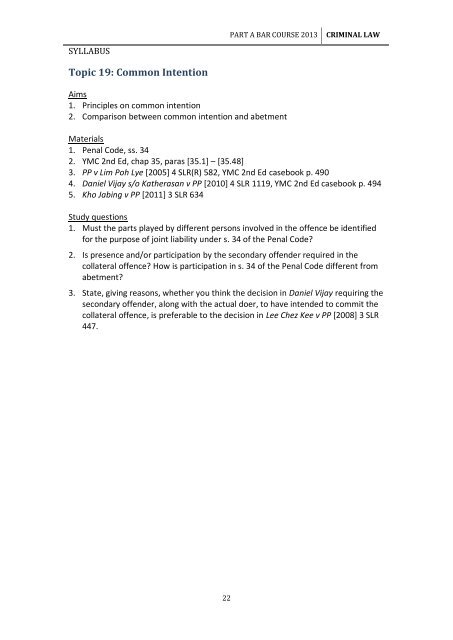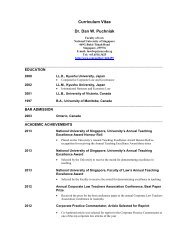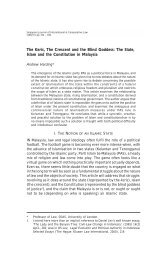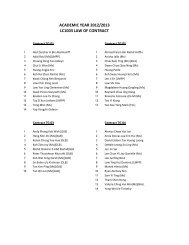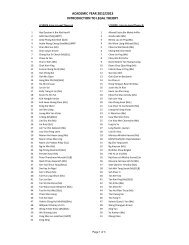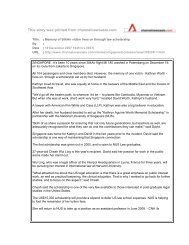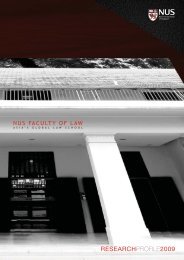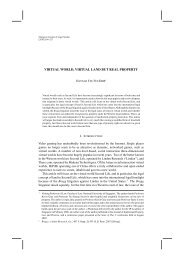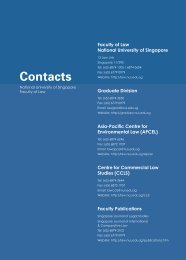PART A BAR COURSE 2013 CRIMINAL LAW
PART A BAR COURSE 2013 CRIMINAL LAW
PART A BAR COURSE 2013 CRIMINAL LAW
- No tags were found...
You also want an ePaper? Increase the reach of your titles
YUMPU automatically turns print PDFs into web optimized ePapers that Google loves.
<strong>PART</strong> A <strong>BAR</strong> <strong>COURSE</strong> <strong>2013</strong> <strong>CRIMINAL</strong> <strong>LAW</strong>SYLLABUSTopic 19: Common IntentionAims1. Principles on common intention2. Comparison between common intention and abetmentMaterials1. Penal Code, ss. 342. YMC 2nd Ed, chap 35, paras [35.1] – [35.48]3. PP v Lim Poh Lye [2005] 4 SLR(R) 582, YMC 2nd Ed casebook p. 4904. Daniel Vijay s/o Katherasan v PP [2010] 4 SLR 1119, YMC 2nd Ed casebook p. 4945. Kho Jabing v PP [2011] 3 SLR 634Study questions1. Must the parts played by different persons involved in the offence be identifiedfor the purpose of joint liability under s. 34 of the Penal Code?2. Is presence and/or participation by the secondary offender required in thecollateral offence? How is participation in s. 34 of the Penal Code different fromabetment?3. State, giving reasons, whether you think the decision in Daniel Vijay requiring thesecondary offender, along with the actual doer, to have intended to commit thecollateral offence, is preferable to the decision in Lee Chez Kee v PP [2008] 3 SLR447.22


